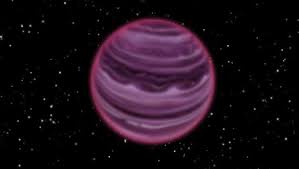PSO J318.5-22 is one of the most intriguing discoveries in modern astronomy: a rogue planet, adrift in the vastness of space, untethered by any star. Found in 2013 using the Pan-STARRS 1 wide-field survey telescope in Hawaii, this free-floating planetary object has captivated scientists and space enthusiasts alike due to its unusual characteristics and what it may reveal about planetary formation and the dynamics of exoplanets.
In this article, we’ll explore the origins, features, and scientific importance of PSO J318.5-22, a mysterious world that challenges our traditional definitions of a planet.
What Is PSO J318.5-22?
PSO J318.5-22 is a rogue planet, meaning it doesn’t orbit a star like Earth or other planets in our solar system do. Instead, it drifts alone through the galaxy. This object lies about 80 light-years from Earth, located in the constellation of Capricornus.
Characteristics of PSO J318.5-22
Despite not being bound to a star, PSO J318.5-22 has features similar to those of young gas giants like Jupiter. Here are some of its standout characteristics:
- Mass: Estimated at 6.5 times the mass of Jupiter
- Temperature: Roughly 1,100 Kelvin (about 800°C or 1,500°F), extremely hot for a planet
- Size: Comparable to Jupiter in diameter
- Atmosphere: Thick, cloudy, and rich in methane and water vapor
Interestingly, because PSO J318.5-22 is not overwhelmed by the brightness of a host star, astronomers can study its atmosphere more directly than that of exoplanets orbiting stars.
How Was It Discovered?
Astronomers discovered PSO J318.5-22 using infrared imaging with the Pan-STARRS 1 telescope on the summit of Haleakalā in Maui, Hawaii. Its brightness in infrared light made it stand out among background stars, prompting further study. Follow-up observations confirmed that it was not orbiting any star and was moving similarly to other objects in the Beta Pictoris moving group.
This discovery was significant because it marked one of the few times a young, isolated planet-like object had been found without a star.
What Makes PSO J318.5-22 So Unique?
PSO J318.5-22 is often described as a “rogue” or “interstellar” planet. But what makes it unique?
- No Host Star: It’s one of the few known planetary-mass objects that formed independently or were ejected from a planetary system.
- Youth and Temperature: Its relatively young age and high temperature make it an excellent candidate for atmospheric study.
- Direct Observation: Unlike most exoplanets, which are detected indirectly (through their effect on their star), PSO J318.5-22 is bright enough to be observed directly in the infrared spectrum.
Theories About Its Origin
Astronomers are still trying to understand how rogue planets like PSO J318.5-22 come to be. There are two leading theories:
- Planetary Ejection: It may have formed in a solar system and been ejected due to gravitational interactions with other planets or nearby stars.
- Failed Star Formation: Alternatively, it may have formed the same way as stars from collapsing gas clouds but never gained enough mass to ignite nuclear fusion, which would make it a brown dwarf or star.
Current evidence leans toward the ejection theory, particularly because PSO J318.5-22 shares motion with the Beta Pictoris group, suggesting a shared origin.
Why It Matters for Science
PSO J318.5-22 offers an unprecedented opportunity for researchers to study the atmosphere of a young gas giant without interference from a host star. This is especially important for understanding:
- Exoplanet atmospheres
- Cloud formation and dynamics
- Infrared spectral features
- How giant planets evolve over time
In addition, its existence raises important questions about how common rogue planets might be in our galaxy. Some estimates suggest that there could be billions of such free-floating worlds, possibly even more than stars.
Could It Support Life?
While PSO J318.5-22 is fascinating, it’s highly unlikely to support life as we know it. Its high temperature and lack of a stable energy source like a star make it an inhospitable environment. However, studying such planets helps scientists understand the range of planetary conditions that exist in the universe and could someday broaden our definitions of habitability.
Conclusion
PSO J318.5-22 challenges many of our assumptions about what a planet is and how it forms. As a rogue planet, it floats alone in space, burning hot and mysterious, without the warmth of a nearby star. Its discovery has opened new avenues for studying planetary atmospheres and the complex dance of gravity that shapes planetary systems.
As telescopes become more powerful and detection methods improve, we can expect to find more rogue planets like PSO J318.5-22 and perhaps one day, even uncover their secrets.



